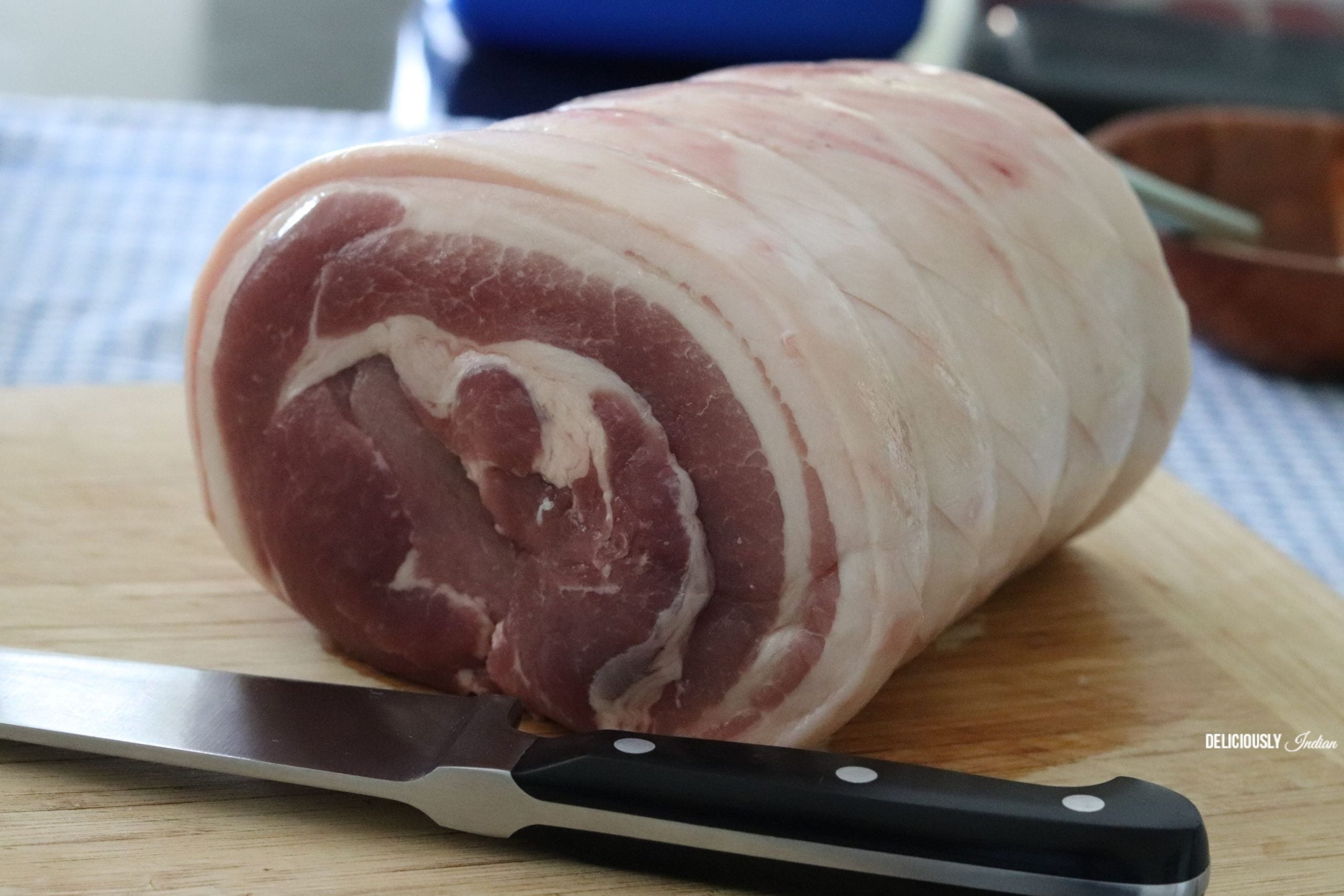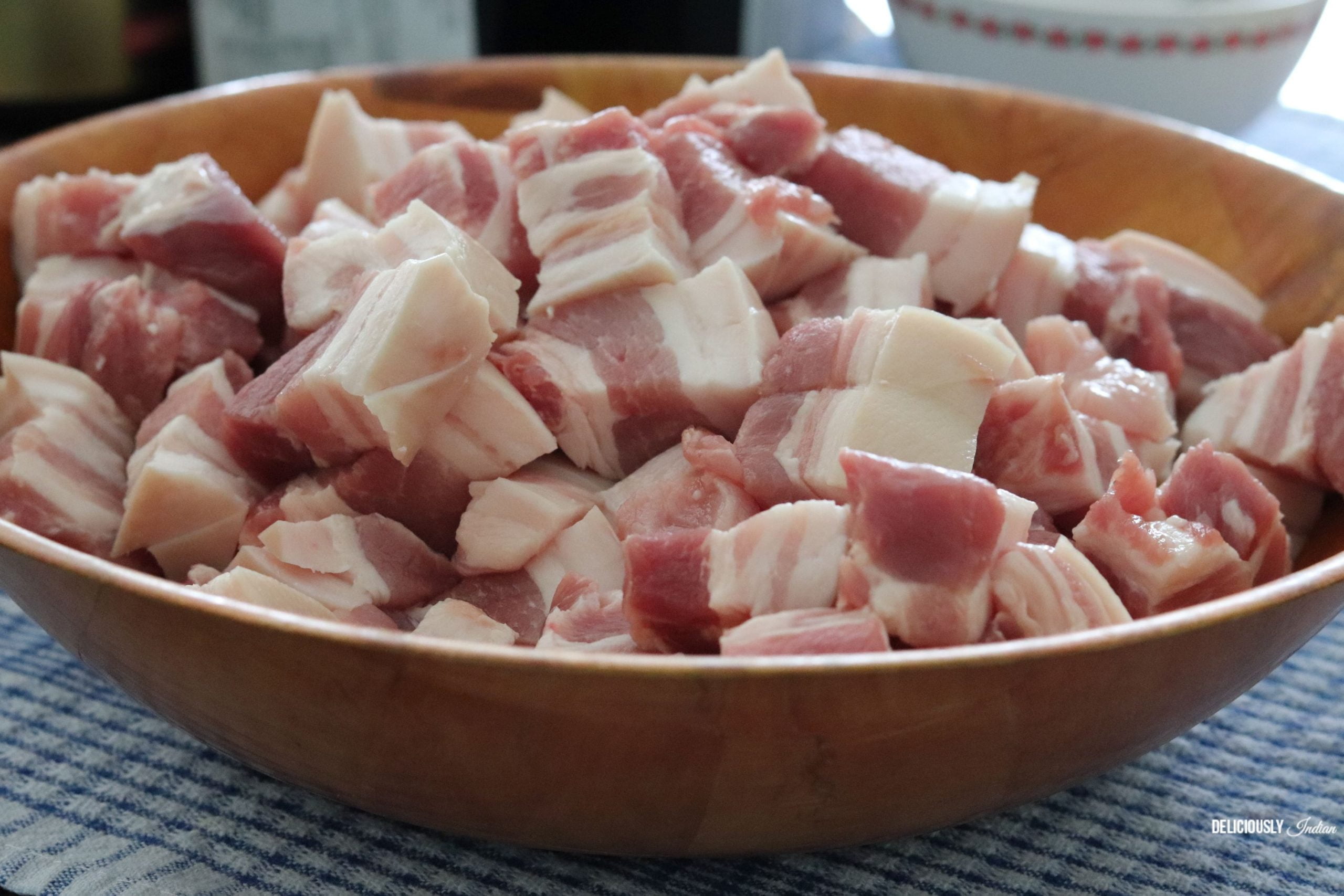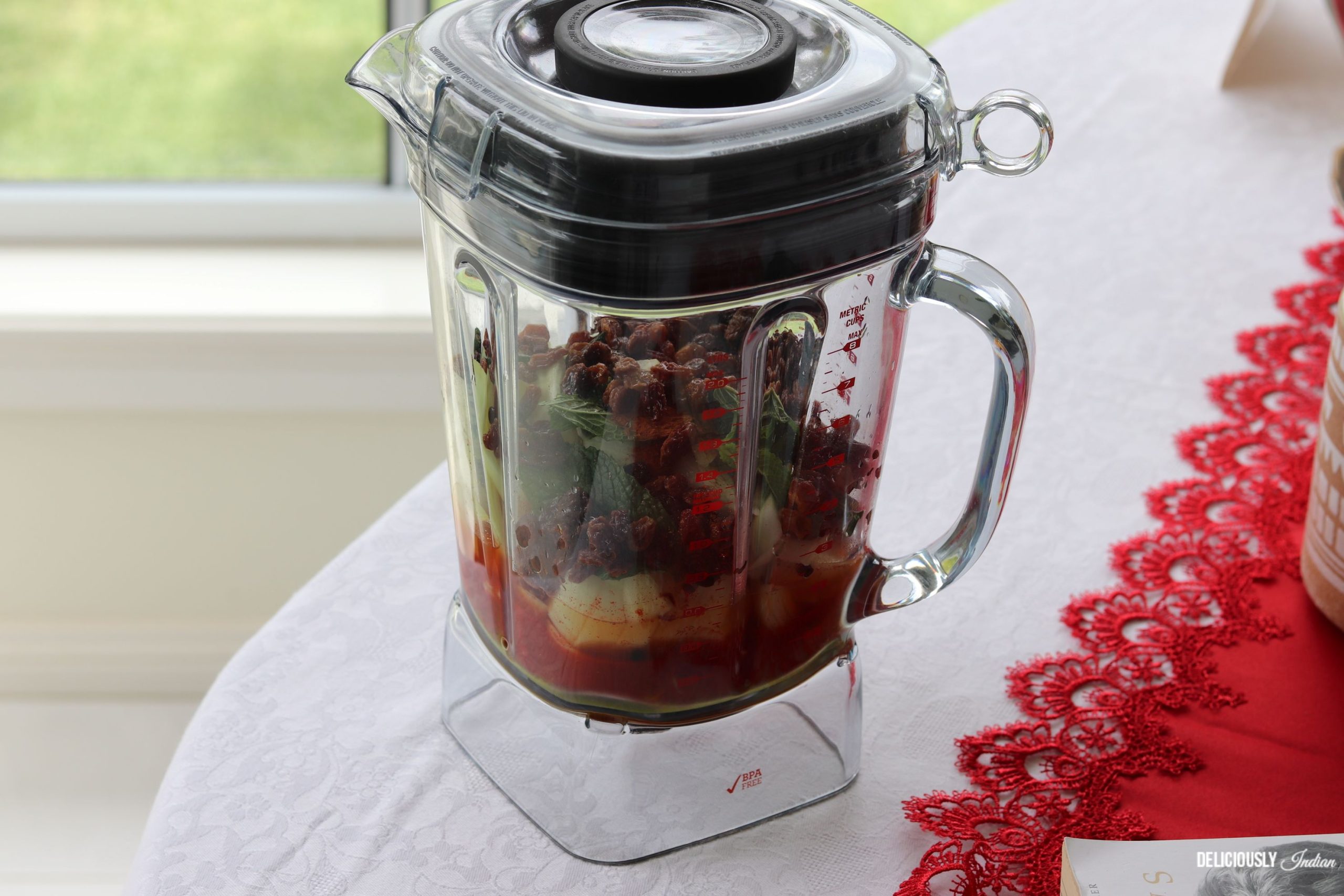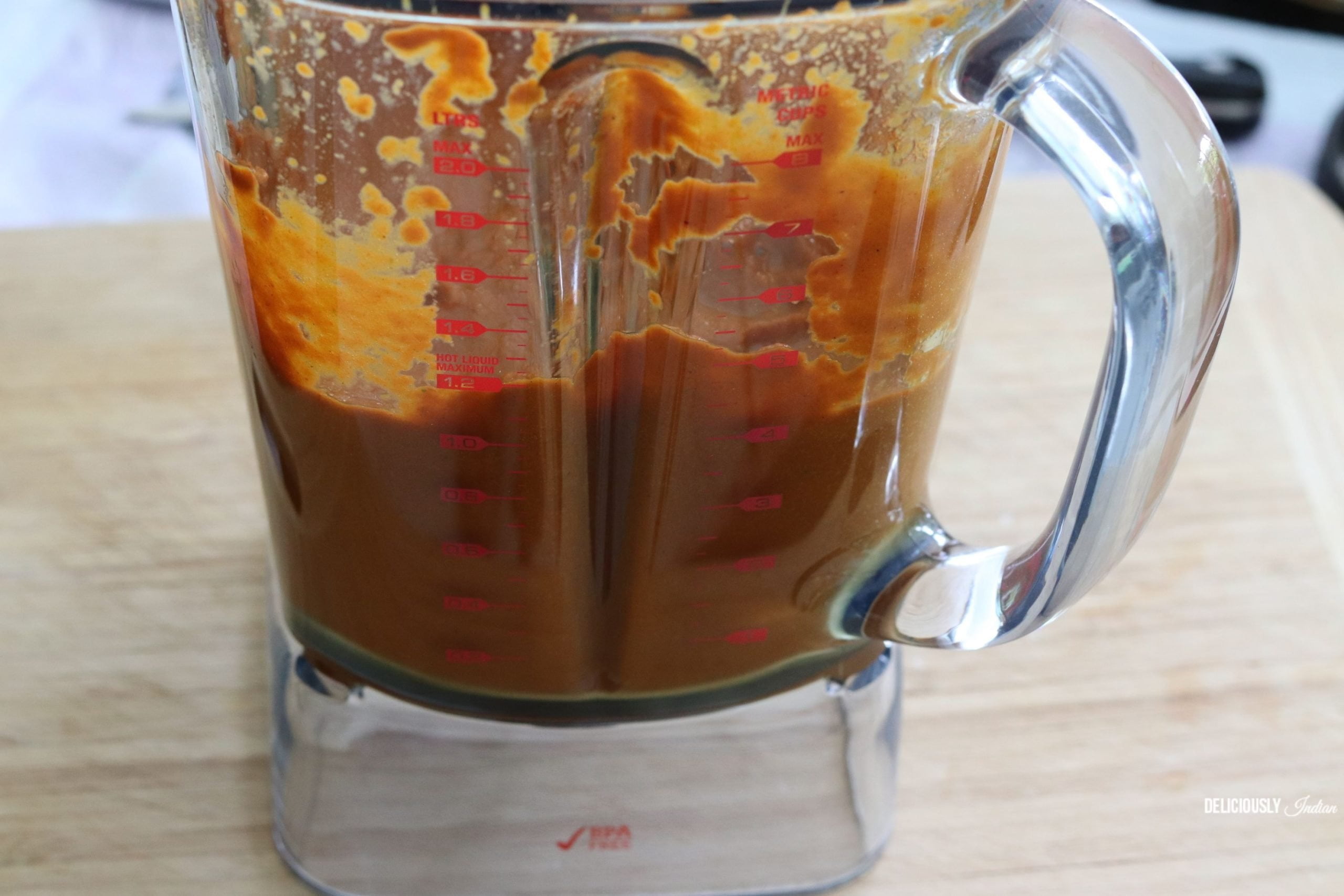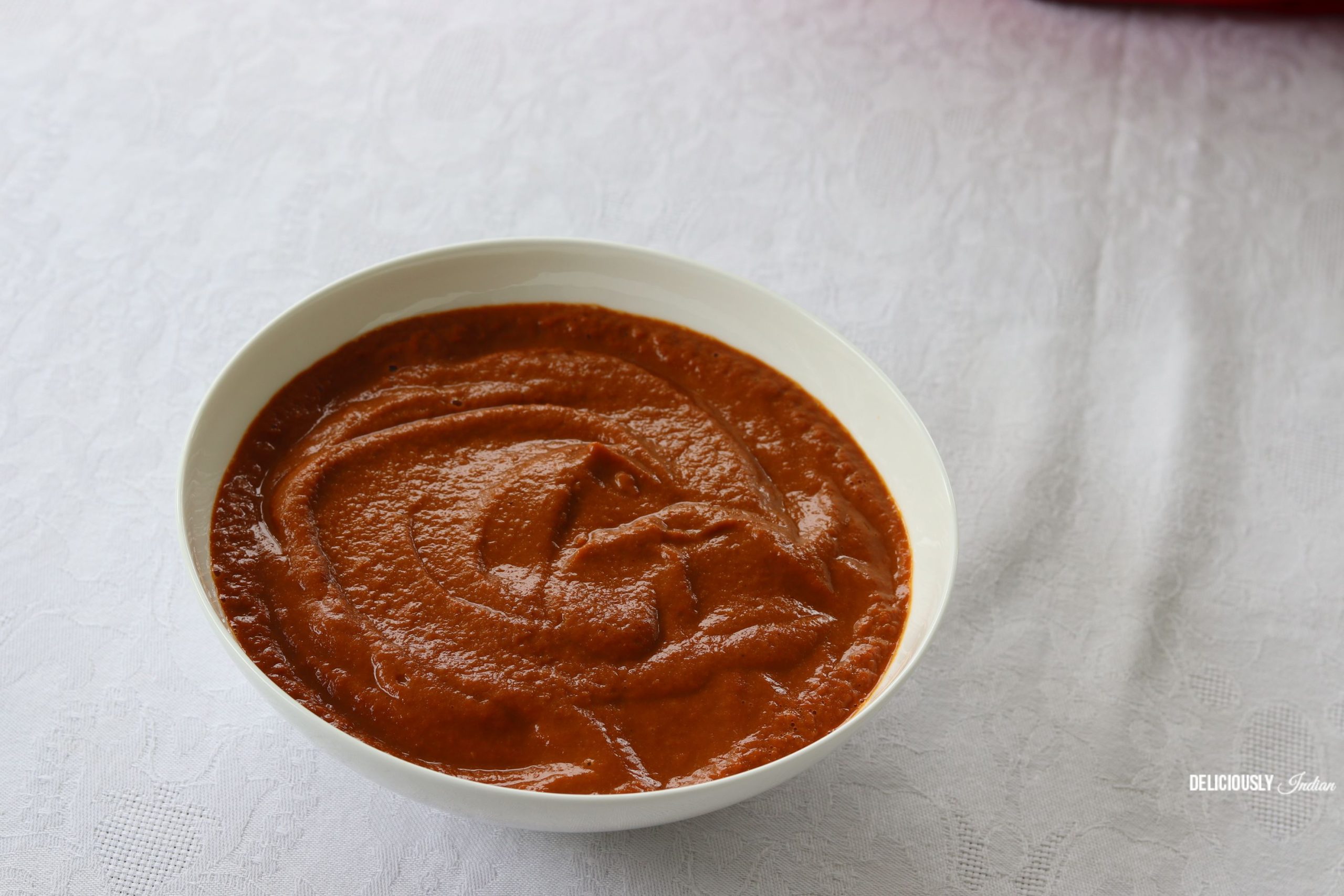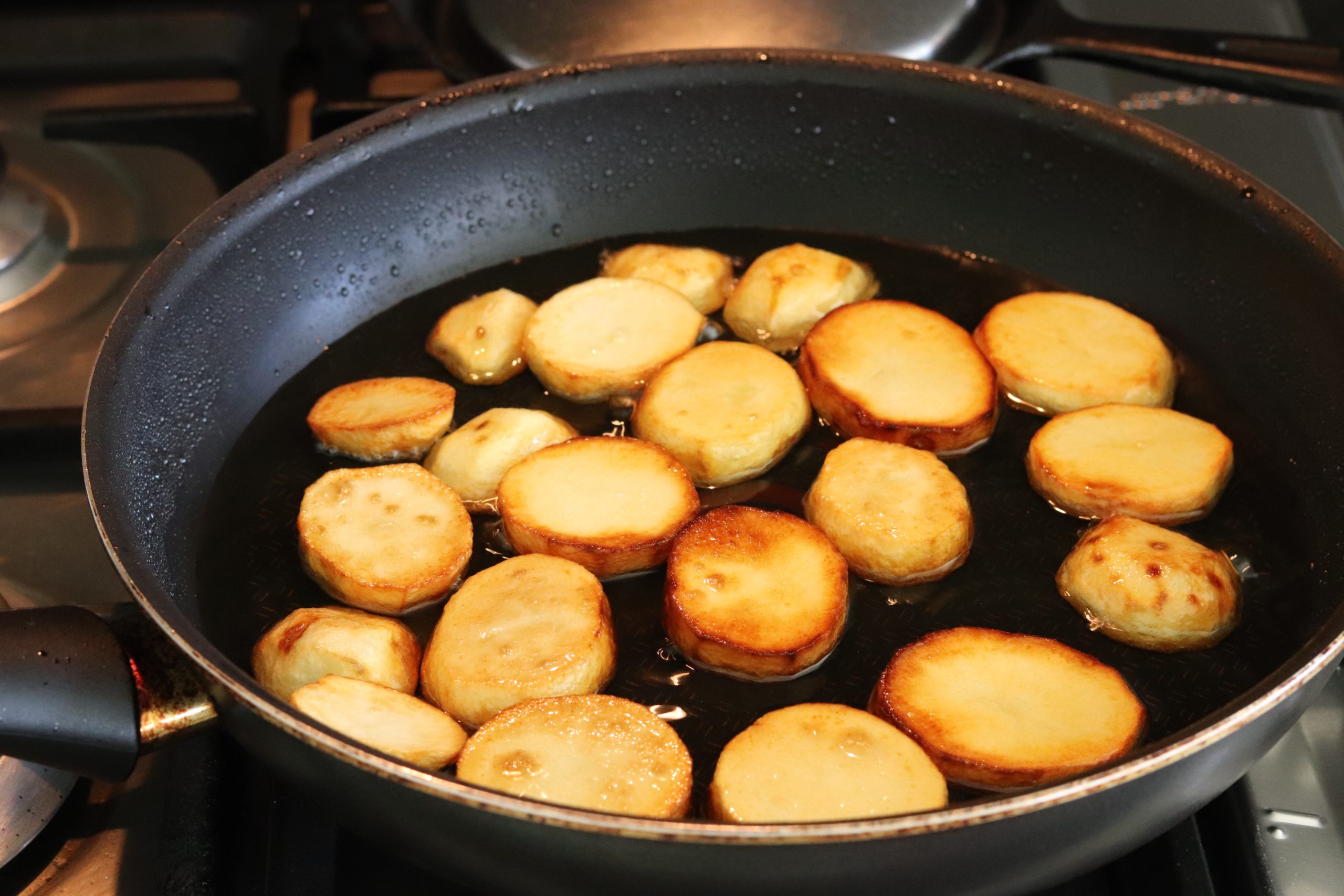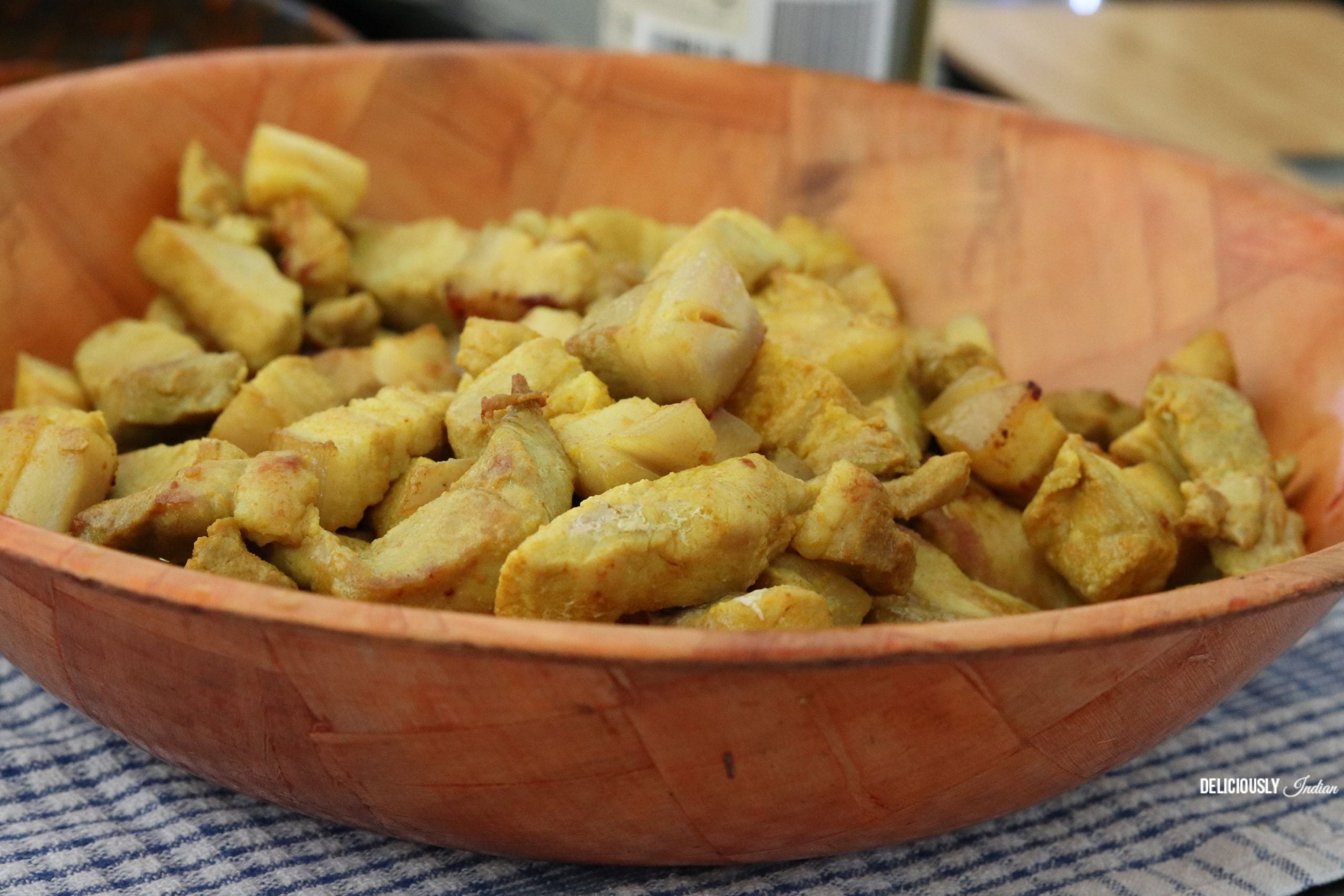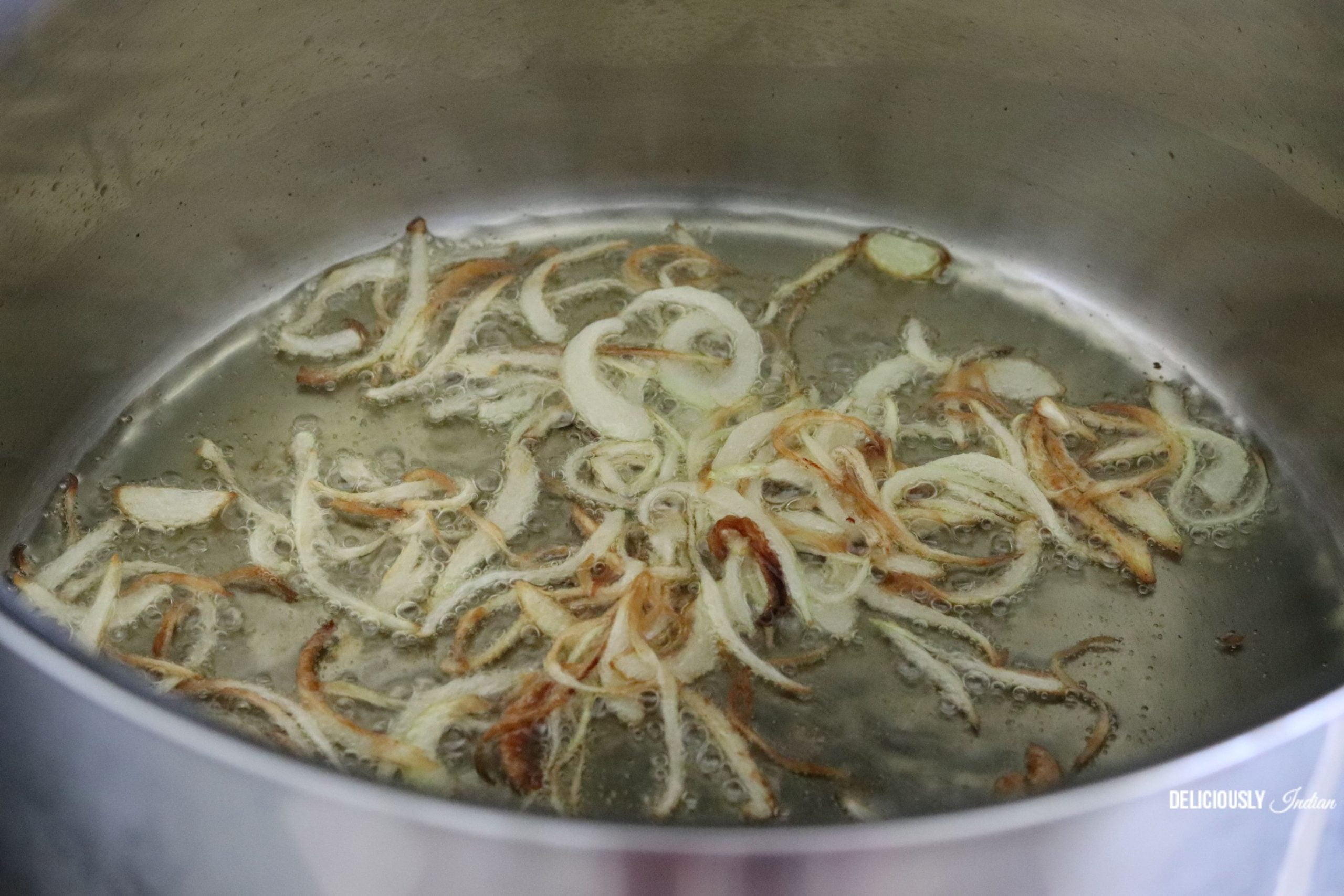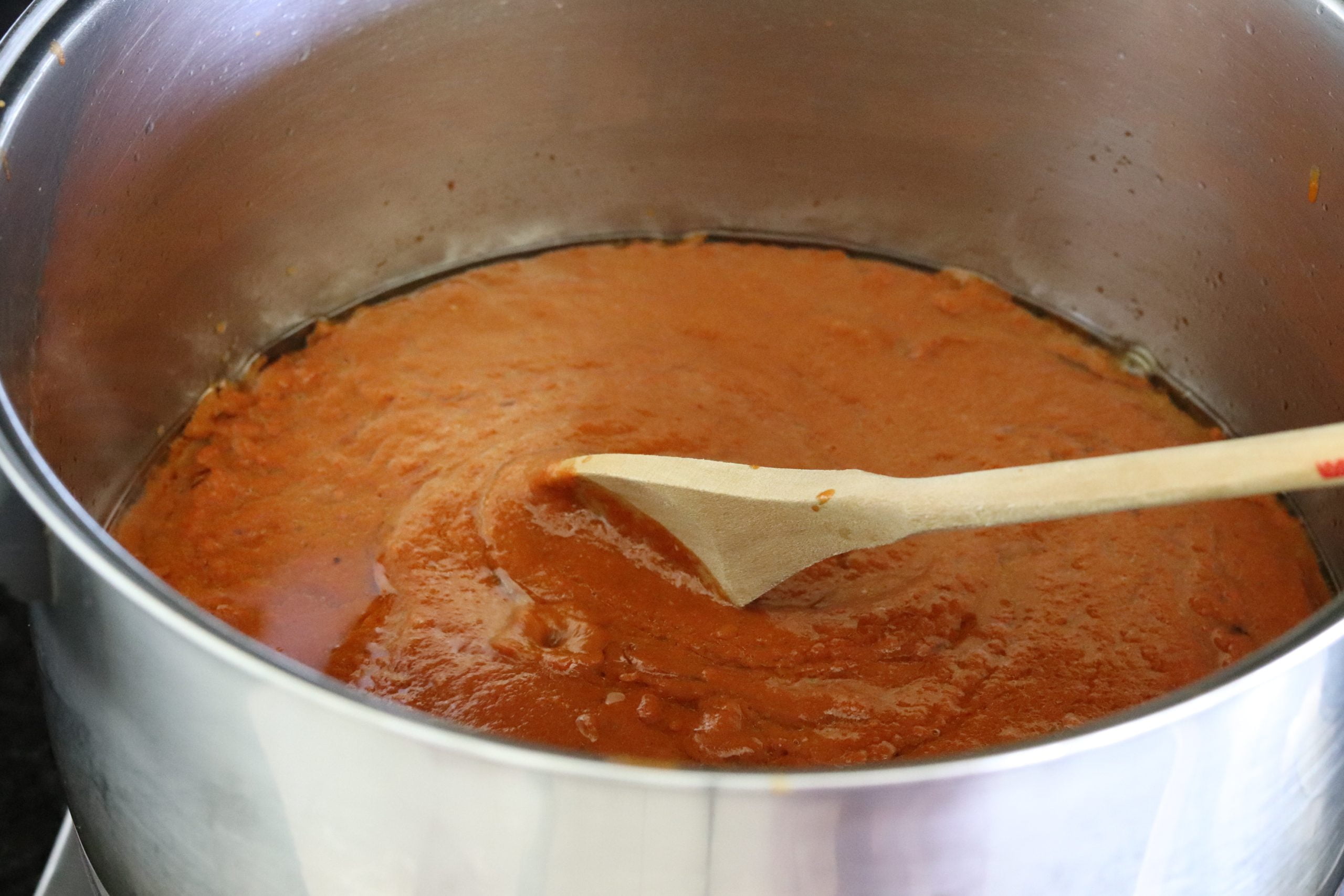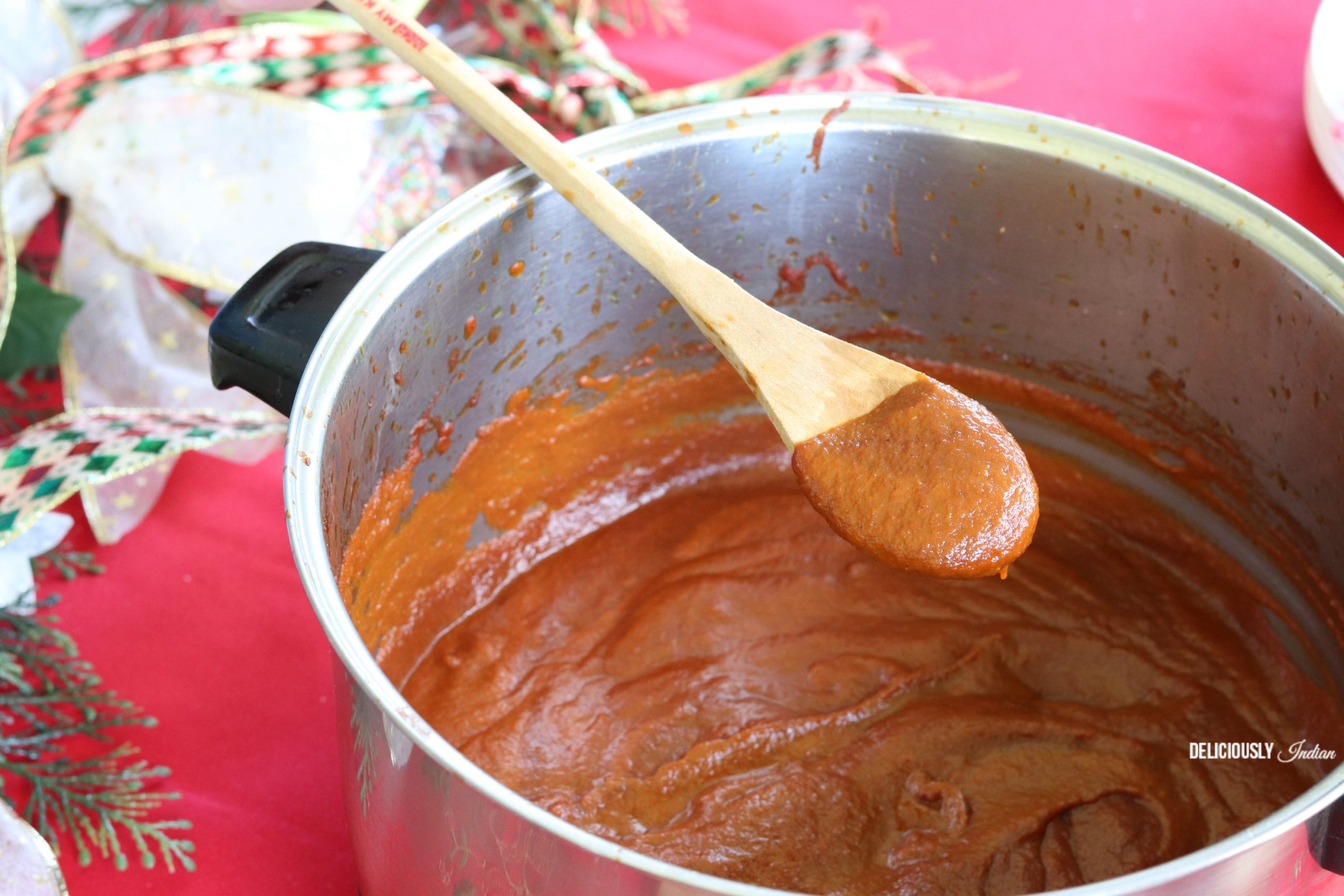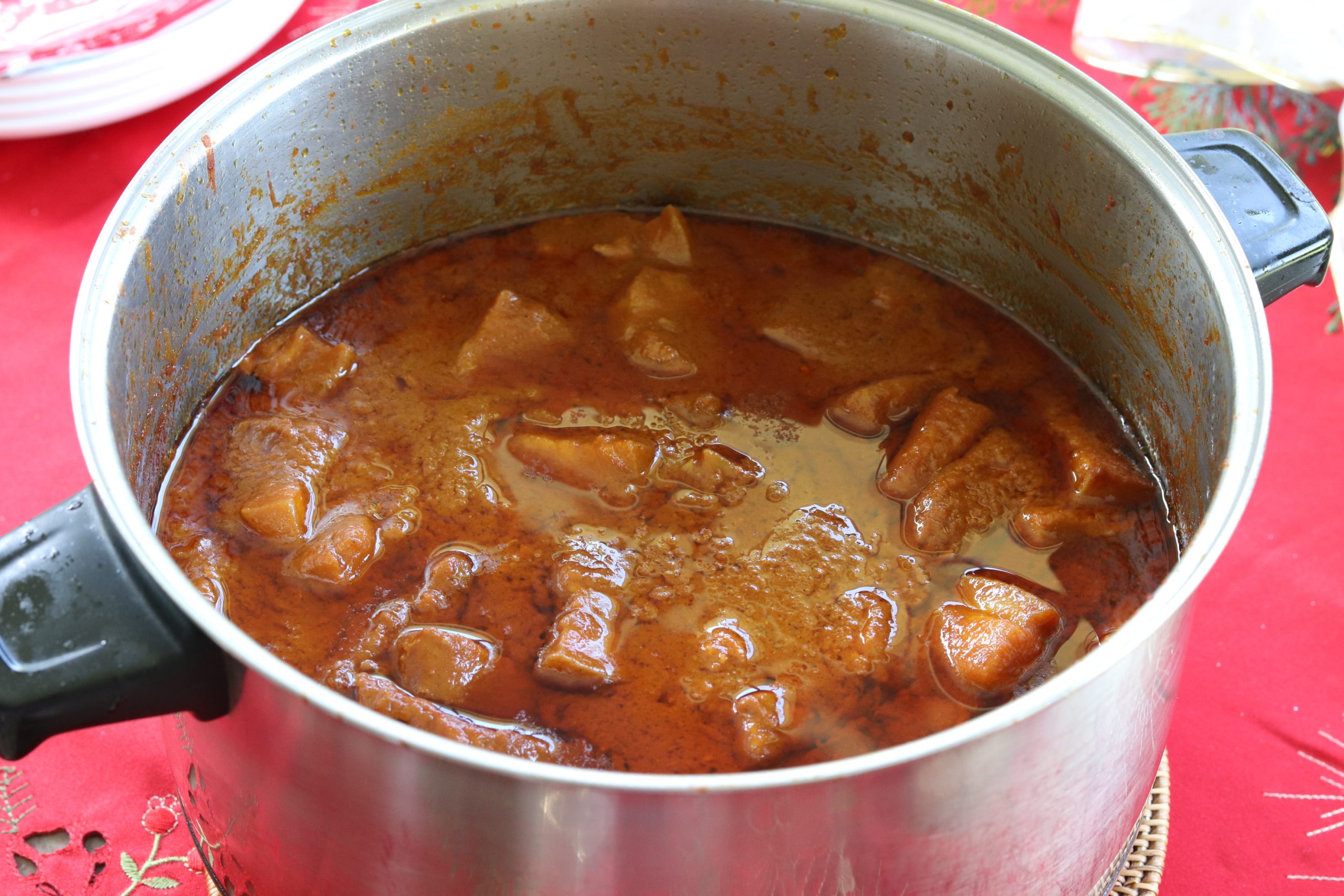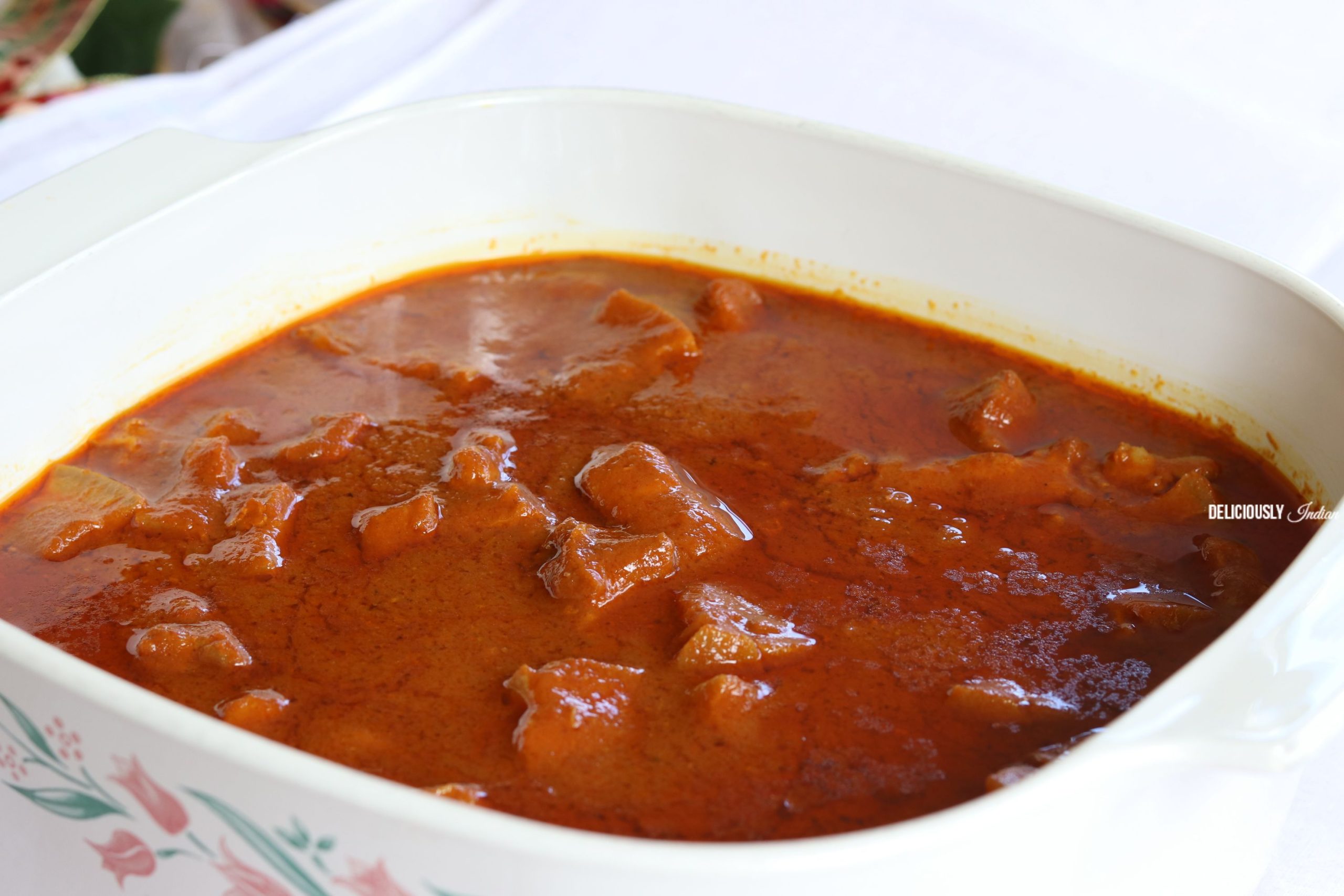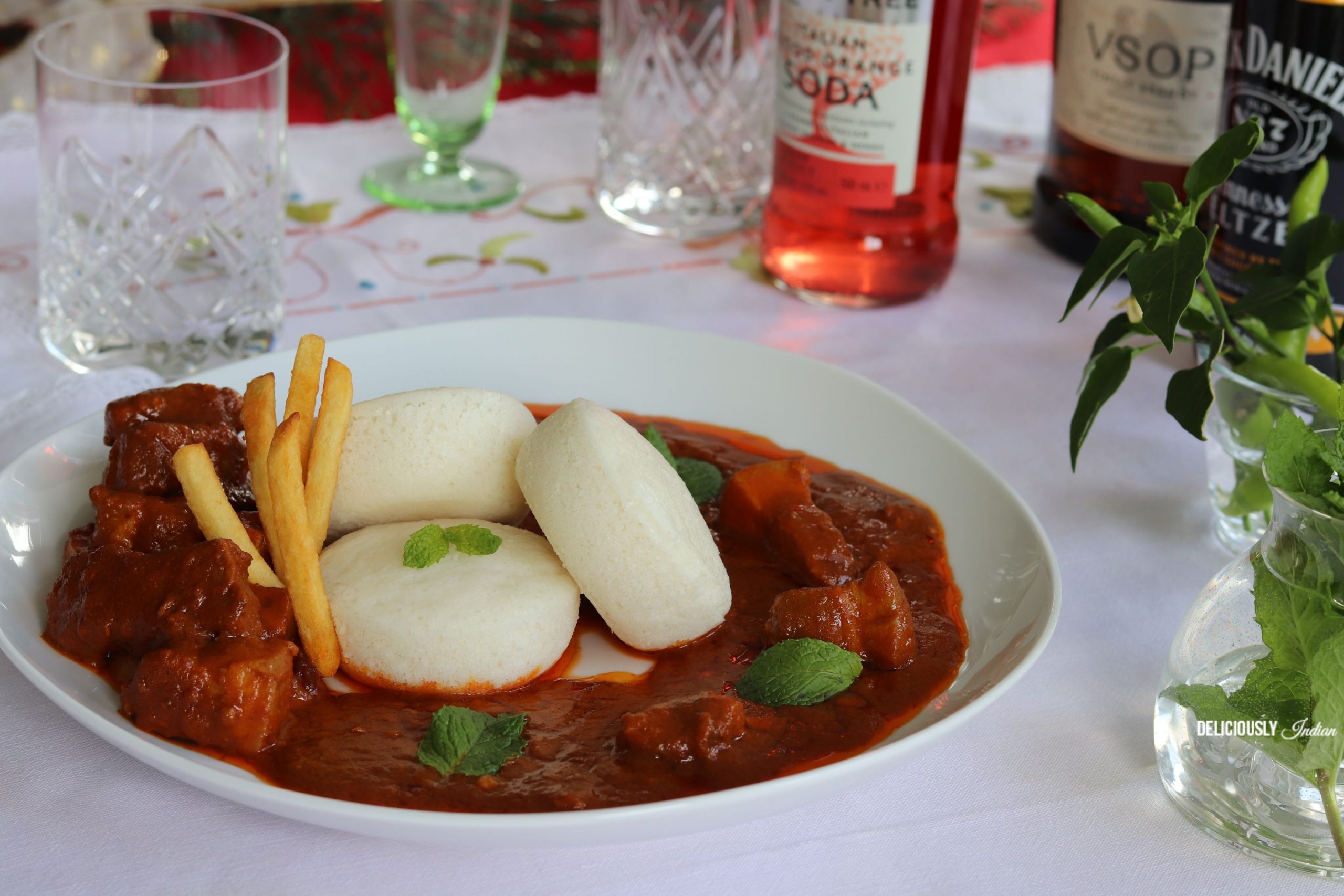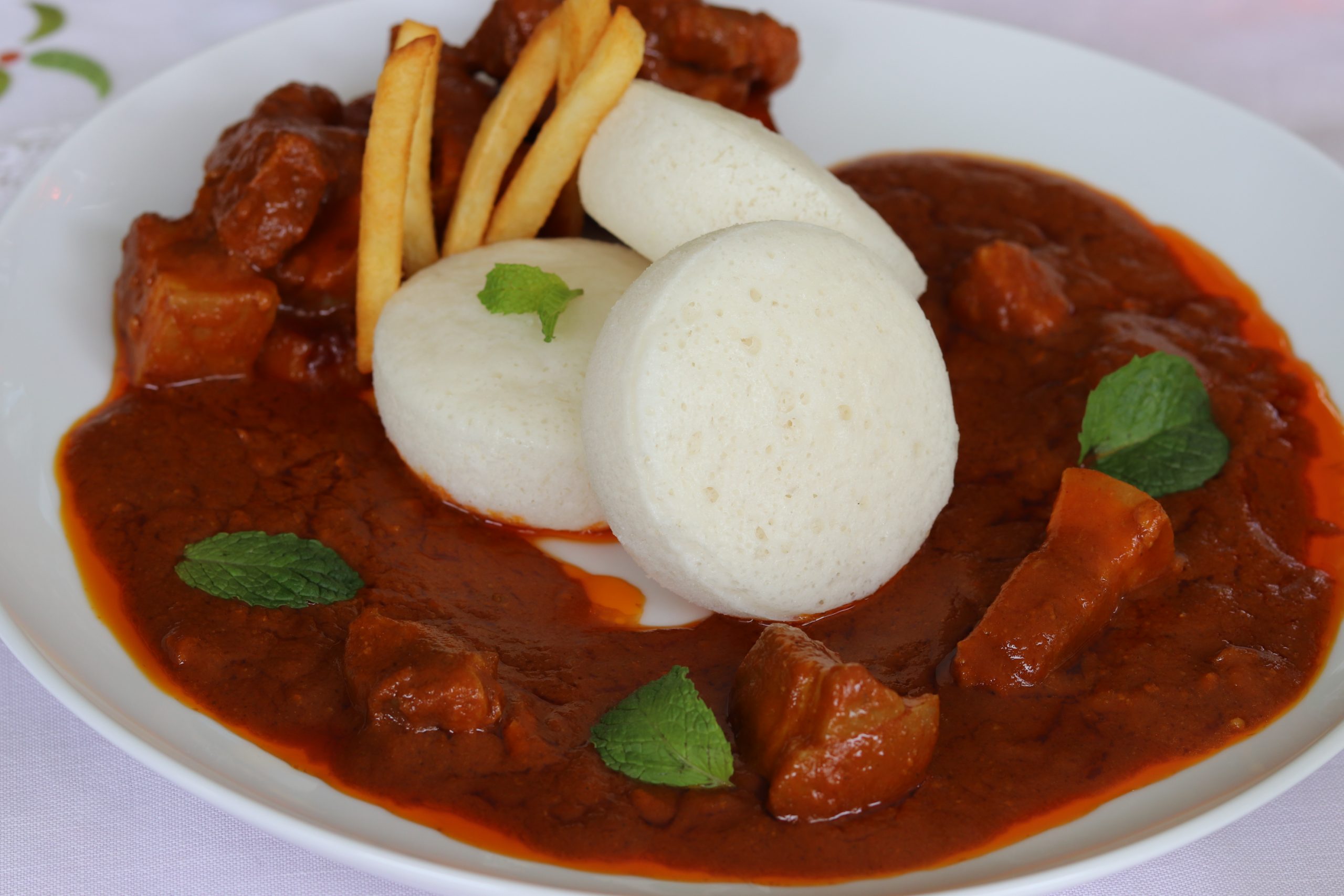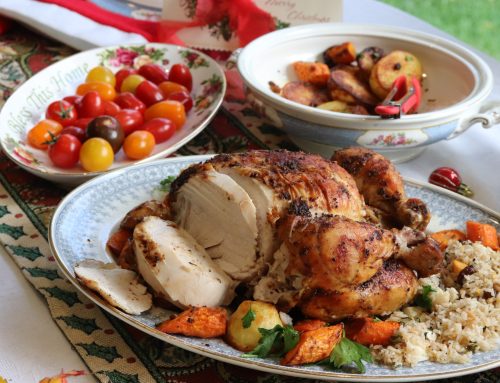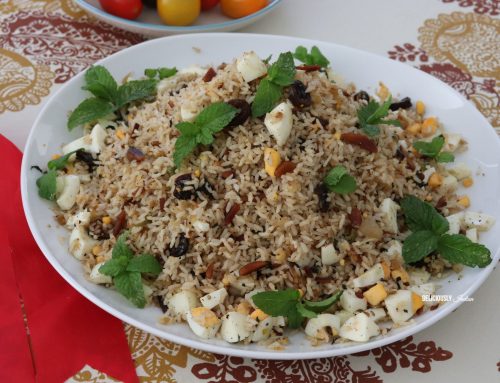Mangalorean Christmas Special Pork Indad
Pork Indad is the most popular traditional centrepiece, of a Mangalorean Catholic Christmas dinner. Serve with sannas, Appams or sweet pulao for a Mangalorean feast.

Merry Christmas to you and to your family
Now that I have my Pork Indad good to go for the Christmas day, I feel truly ready to wish you and your family a beautiful Christmas on behalf of my family and the wonderful team at Deliciously Indian.
Would you agree with me if I told you that most of us have our favourite dishes and treats saved only for Christmas? When I think of Christmas dinner, 'Pork Indad' is the first thing that comes to my mind. I have made many pork dishes and curries in my time. Of all the pork dishes, Pork Indad is a traditional and the best of festive curries. It is rich with a good balance of sweet, spice and tang. It is a dish I have made for every Christmas since the time I arrived in Australia.
I do not need to explain more about 'Pork Indad' because 'Pork Indad' and 'sannas' are synonymous with a Mangalorean Christmas just as much as a turkey roast and pudding to a white Christmas. For my family, Christmas is never complete without Pork Indad and Sannas.
Step-by-Step Instructions to prepare Indad
Slice the pork loin into 4cm long x 2cm wide pieces as shown in the below right image (Image 2) and marinate in 1½ tbsp. salt and ½ tsp. turmeric powder for no more than 20 minutes.
While the pork is marinating, blend the ingredients listed under the heading 'For the Masala' along with hydrated Kashmiri Chillies (if you are using whole Kashmiri Chillies) or Kashmiri chilli powder and the tamarind pulp/the tamarind and the juices to a smooth paste. If using a small blender, blend in two batches. In my 'Breville heavy duty blender', I blend for 3 minutes in the 'blend' cycle with 1 minute intervals. I also use my 'puree' cycle and puree for 1 more minute just to get the paste very smooth.
Pour the ground masala into a bowl. Wash the blender with 500mL water and set aside. If you have a 'clean' cycle in your blender, use the clean cycle and this does a really good job of cleaning all the masala from the nook and crannies of the blender.
Heat ¾ cup of oil in a shallow frying pan and fry the cut potatoes until golden brown. Remove on to an absorbent paper and set aside. In the same pan, carefully brown the marinated pork pieces in 3 batches. Brown each batch for 3 minutes on each side. Remove from the frying pan and set aside. Save the pan juices. Heat ½ cup oil in a heavy based deep saucepan with a lid. Add 1 sliced onion and fry for 6 minutes. I can see you frowning because there are too many steps, but believe me it is every bit worth it!!!
Add the ground masala and fry for 15-20 minutes. Yes, it is important to fry the masala as it is traditional to fry this masala. Please do not skip this step. If you do, you will have a rather boring Christmas pork curry and not much of an Indad. The rich taste comes from frying the masala well till it turns into a deep colour. It's difficult to capture the correct colour of the fried masala but the below right image (Image 10) gives you a rough idea how the curry should look after frying. It has a darker colour than the unfried masala.
Add the browned pork pieces, the pan juices and the remaining blender water. Stir well to combine and at this stage season with salt, vinegar and sugar as per your taste. Bring to the boil on medium heat. Cover and simmer for 20 minutes or until the gravy is thickened and has a custard like consistency. Stir from time to time. This is a rich dish so, a garnish is not a must!!
Phew what a relief!! I love the final dish because it is the taste of Christmas that is nostalgic!! Can never forget the taste of my mother's food. Would you agree with me on this one?
Gather your family - it's time for some serious holiday feasting!!!
Merry Christmas and thank you all for everything from following my recipes, trying them out, for your feedback, comments, likes and support during 2021. Your support is a gift I will always treasure!!
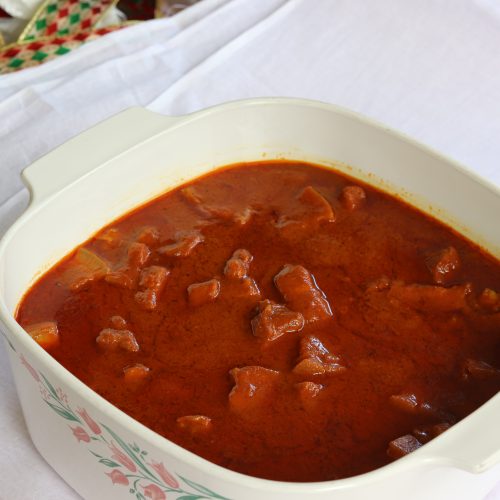
Mangalorean Christmas Special Pork Indad
Ingredients
- 1¾ - 2 kg pork loin or pork belly boneless
- 1½ tbsp. salt 17g to marinate pork + 1 tbsp. extra (10g) for the gravy
- ½ tbsp. turmeric powder 6g for blending and ½ tsp. extra for marinating pork
- 1 ball of tamarind 15g without seeds and fibre
- 2 large potatoes 500g peeled and cut into 1cm rounds
- 3 tbsp. sugar or to taste 50g
For the masala
- 200-250 mL white vinegar or white wine vinegar or to taste (decrease as per taste or add in 50mL increments) (See NOTE 2 below before proceeding to cook)
- 5 medium onions 550g sliced + 1 onion extra (150g) sliced
- 1¼ level tbsp. cumin powder 10g
- 22 dried Kashmiri chillies or 2½ tbsp. Kashmiri chilli powder 25g or to taste
- 15 pepper corns
- 100 g sultanas soaked in water for 15 minutes and drained
- 8 large cloves of garlic 45g peeled and roughly sliced
- 3 green chillies or to taste
- 22 leaves of mint 4g
- 14 cloves
- ½ tsp. cinnamon powder 2g
For frying
- ¾ cup oil for shallow frying potatoes and pork
- ½ cup oil for frying reserved onion and ground masala
Optional extras
- 4 tbsp. brandy optional
Instructions
- Slice the pork into 4cm long x 2cm broad pieces or cut into chunks. Marinate in salt and ½ tsp. turmeric powder for 20 minutes.
- If you are using whole Kashmiri chillies, soak them in 1 cup hot water for 15-30 minutes to hydrate them.
- If your tamarind has seeds and fibre in it, then soak the tamarind in ¼ cup hot water for 15 minutes. Squeeze pulp and add only the pulp to the blender in Step 4. If your tamarind does not have seeds and fibre, you may soak in hot water for 10 minutes and add tamarind and the juices directly to the blender.
- For the masala, while the pork is marinating, blend vinegar, 5 onions, ½ tbsp. turmeric powder, cumin powder, whole Kashmiri chillies or chilli powder, pepper corns, sultanas, garlic, green chillies, mint, cloves, cinnamon powder and the tamarind pulp or the tamarind and the juices to a fine paste. I use my large Breville blender to blend all in one go (as shown in the image above). You may blend in two batches, if your blender is not large enough to hold all the ingredients. Wash the blender in 500mL water and reserve the masala water.
- Heat ¾ cup oil on medium in a heavy based frying pan and shallow fry the potatoes till golden brown. Remove on to absorbent paper and set aside.
- Continue using the same frying pan. If the oil is cold, heat oil on low, and lightly brown marinated pork pieces in 4 batches (about 3 minutes on each side). Wear gloves as the fat tends to spit (See NOTE 4 below). You will know the pork is ready to be removed when you see clear juices coming through pieces. The idea is to give the pork a smoky and rich flavour before adding it to the curry. When the pork pieces are ready to be removed, remove the pieces with a slotted spoon into a large bowl. If you do not brown the pork, the curry will lack the smoky flavour and will taste like a regular pork curry. The pork will be cooked again, once it is added to the curry in Step 9.
- Reserve the pan juices.
- Heat ½ cup oil in a heavy based large deep saucepan which has a lid (enough to hold the meat and the curry comfortably) on medium and fry the reserved sliced onion until nearly brown (approx. 6 minutes). Turn heat to low and then gently add the ground paste, bearing in mind that the paste will splutter when it hits the hot oil. Fry the ground paste for 10-15 minutes or until the colour changes to a darker shade, stirring constantly (see NOTE 4 below). Add 100mL blender water a little at a time, if the paste sticks to the pan.
- Add the pork, juices and the remaining water in which you washed the blender. Stir to obtain a thick gravy. Add another 200mL water to thin down the gravy a bit more. Add the reserved pan juices. Deglaze the frying pan with 75mL water and add to the saucepan. Add 1 tbsp. salt, sugar and stir to combine. Taste and season if required. Add more sugar or salt or vinegar, only if required. Close lid and bring to the boil on medium heat. Stir well and lower heat and simmer for 20-25 minutes with the lid closed. Stir from time to time to avoid catching or burning while the pork is simmering. Simmer until the gravy is close to the consistency of custard and the pork is cooked to your liking (no more than 25 minutes in all). If the gravy looks runny, open lid and simmer for a further 5 to 7 minutes, only if required.
- Remove from heat and add the brandy and give it a good stir.
- Garnish with fried potatoes before serving. Serve with sannas, appams or neer dosa. Jump to Mangalore Sannas Recipe
Notes
- The pork used for this preparation should have a certain amount of fat in it, as the fat gives this dish a rich texture and taste.
- Traditionally, white vinegar is used for this dish, as this dish is all about the balance between sweet, sour and spice. In my experience, white vinegar works best. However, if you cannot tolerate white vinegar, you may use white wine vinegar for a mellow tasting dish, although the taste of the final dish may vary slightly. Tailor the white wine vinegar to your taste, and if you are not sure, add in 50mL increments until you get the desired taste. Alternatively, you may use a combination of tamarind (increase tamarind to 80g) and white wine vinegar (say 80mL to 120mL). Taste and add vinegar in small increments during cooking, until you get the desired taste. You must cook the vinegar for at least 3 minutes once you add it.
- Instead of chilli powder, I have used 22 Kashmiri chillies to get this deep red colour without the heat. This curry turns out medium hot. If you like only the deep red colour without any heat, remove seeds of some chillies or all chillies, as per taste. Again, tailor the chilli powder or chillies as per your taste and spice levels.
- Brown pork in batches. Browning pork in batches ensures even browning on all sides. Use gloves and safety glasses when browning pork and the ground paste. The fat in the pork spits when browning. If you have an outdoor barbecue, you may use the side burner to brown the pork and the ground paste, as this ensures your bench top in the kitchen is clean.
- I use my ‘Breville’ heavy duty blender to blend my masala ingredients. I put the ‘Blend’ function and blended it for 4 minutes at one-minute intervals. If you have a ‘Breville’ blender, you can switch to the ‘Puree’ function for 1 minute in addition to the 4 minutes of the ‘Blend’ function.
- The addition of ½ tbsp. ghee in step 4 gives this dish a rich taste (optional).
- This is a traditional Mangalorean festive pork recipe and is best served hot with sannas (Indian rice and lentil cakes) or panpolays (Neer dosa) or appams (fermented lacy pancakes).
- Adding alcohol to the curry, gives it a festive touch. It is not overpowering.

